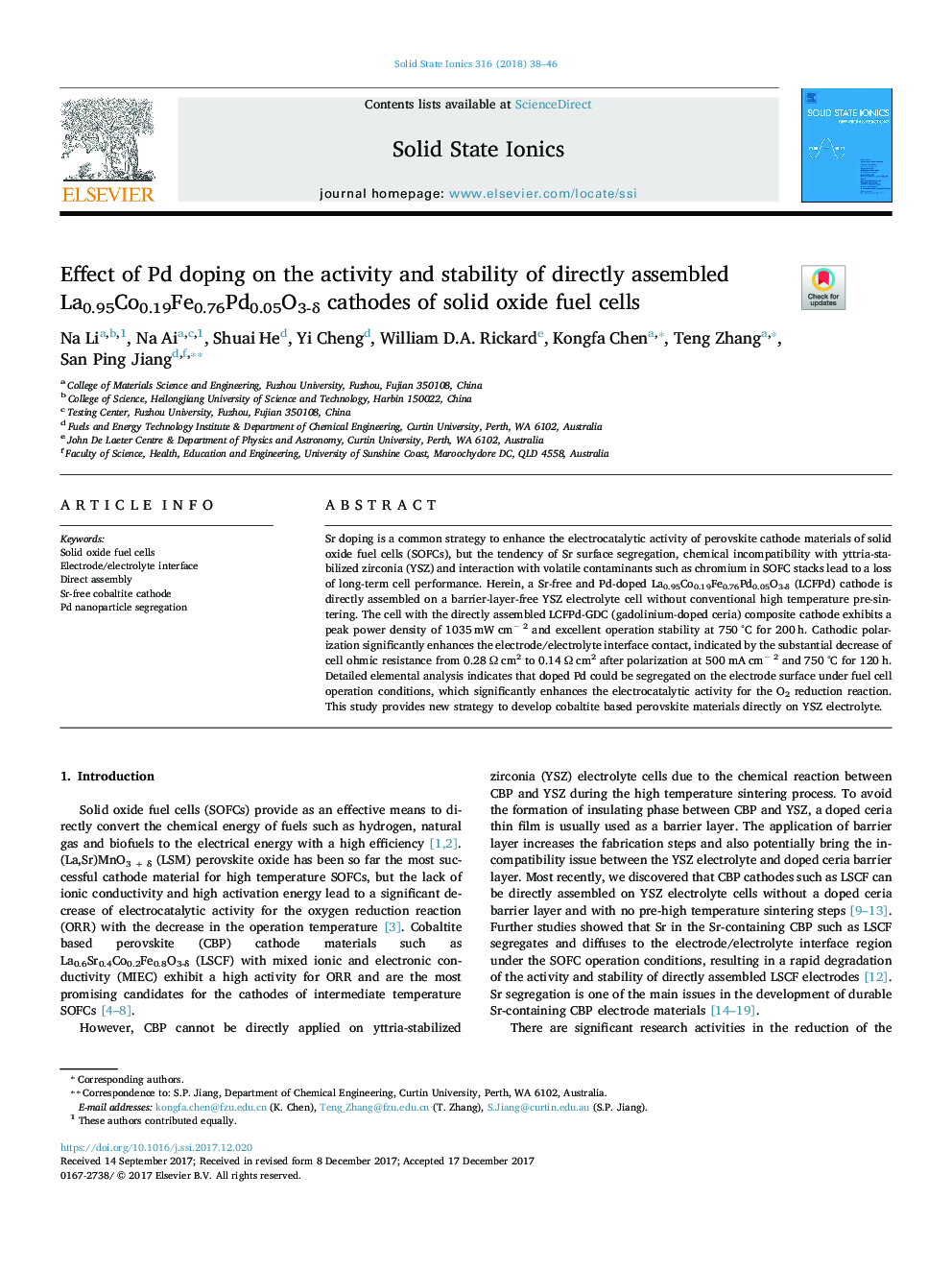| Article ID | Journal | Published Year | Pages | File Type |
|---|---|---|---|---|
| 7744519 | Solid State Ionics | 2018 | 9 Pages |
Abstract
Sr doping is a common strategy to enhance the electrocatalytic activity of perovskite cathode materials of solid oxide fuel cells (SOFCs), but the tendency of Sr surface segregation, chemical incompatibility with yttria-stabilized zirconia (YSZ) and interaction with volatile contaminants such as chromium in SOFC stacks lead to a loss of long-term cell performance. Herein, a Sr-free and Pd-doped La0.95Co0.19Fe0.76Pd0.05O3-δ (LCFPd) cathode is directly assembled on a barrier-layer-free YSZ electrolyte cell without conventional high temperature pre-sintering. The cell with the directly assembled LCFPd-GDC (gadolinium-doped ceria) composite cathode exhibits a peak power density of 1035 mW cmâ 2 and excellent operation stability at 750 °C for 200 h. Cathodic polarization significantly enhances the electrode/electrolyte interface contact, indicated by the substantial decrease of cell ohmic resistance from 0.28 Ω cm2 to 0.14 Ω cm2 after polarization at 500 mA cmâ 2 and 750 °C for 120 h. Detailed elemental analysis indicates that doped Pd could be segregated on the electrode surface under fuel cell operation conditions, which significantly enhances the electrocatalytic activity for the O2 reduction reaction. This study provides new strategy to develop cobaltite based perovskite materials directly on YSZ electrolyte.
Related Topics
Physical Sciences and Engineering
Chemistry
Electrochemistry
Authors
Na Li, Na Ai, Shuai He, Yi Cheng, William D.A. Rickard, Kongfa Chen, Teng Zhang, San Ping Jiang,
